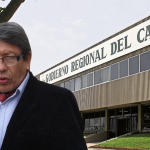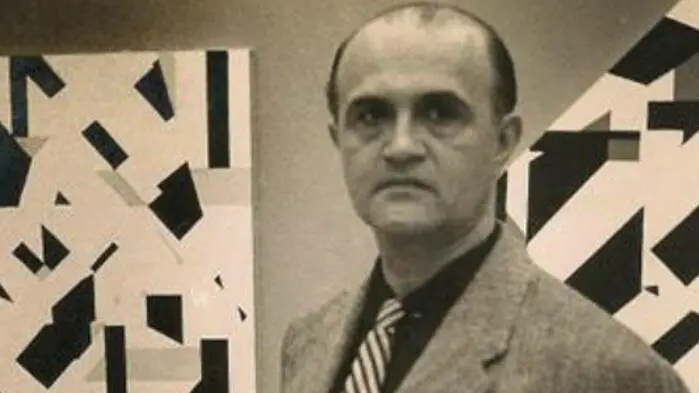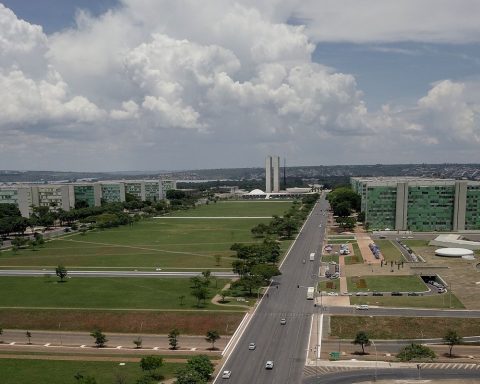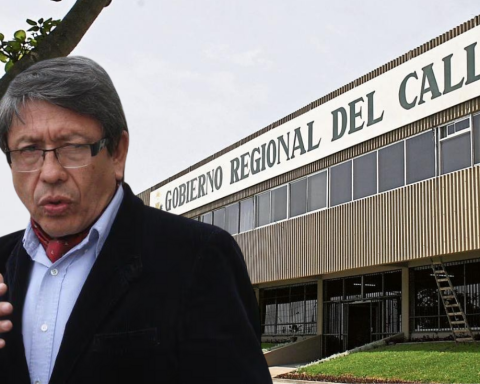The passion carpets, one of the cultural and religious expressions of sacred art that stands out most in the city of León, in the west of the country, will be overshadowed if the regime maintains the prohibition of the procession of the Burial Christ of Sutiaba that takes place through the streets of the indigenous town.
The religious tradition of the passion carpets, with more than a century of existence, has become a tourist attraction for those who want to learn about the skills of the Sutiabe families who exhibit with sawdust and colors, biblical prints of the life and death of Jesus on earth.
Related news: The new pastoral challenges for the Catholic Church in Nicaragua
The activity has been a religious and cultural festival every Holy Week, but this year the regime of Daniel Ortega and Rosario Murillo puts the “bad mark” on it, which has prohibited the processions as part of the war that it is waging on the Nicaraguan Catholic Church, because the religious, like the international community, have denounced the violations of human rights in the country.
Through a letter, Monsignor Sergio Soler Lorío, parish priest of the San Juan Bautista de Sutiaba parish church, informed the Catholic people days ago that the official tour of the Christ Burial of Sutiaba this year, “was suspended for reasons beyond the control of the Church.” which is the version that the regime forces them to communicate to the parishioners. The church has asked the believers yes, to keep the faith through the streets where the procession would pass this year.
They block heritage of culture and faith
The Quintanilla family belongs to the sixth generation of artisans who design pasionaria sawdust rugs on Sutiaba street. An offering that they dedicate to the Lord for favors received, but due to the current situation, they point out that this year, he would not elaborate his religious painting.
“These rugs are dedicated to the Holy Burial of Sutiaba. A religious tradition of the family since 1910, but since there will be no procession, then we are not going to make our representation in the street of the carpets, an area dedicated to the Lord”, lamented Mirna Quintanilla.
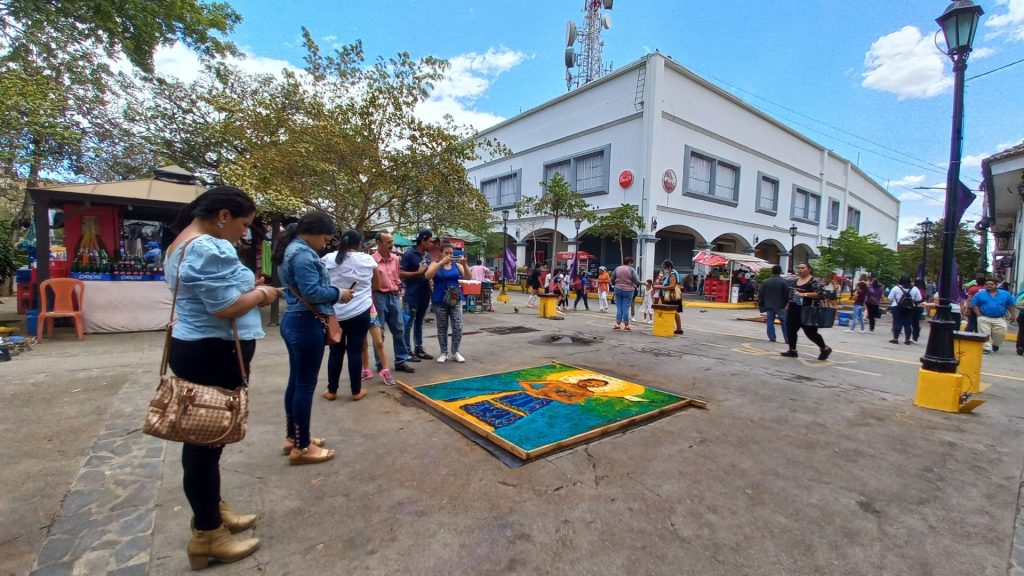
He stressed that the passion carpets made by Los Sutiabas, is a sacred art full of culture, religious tradition, color and faith, since each representation is based on biblical passages where each Christian family manifests its dogma in the creation of the themes elaborated under the inclement sun of that day, he said.
“The brotherhood of the Holy Burial announced that there will be no procession. So the artisan families of tradition that make the rugs in Sutiabas will not participate, because we consider that with the prohibition, we are being denied a Christian and faith right, that we, the Nicaraguan Catholic people, have to express ourselves freely in this artistic manifestation”, he pointed out.
“What is happening to us is unfortunate and painful, a precedent never seen in the history of Nicaragua, of America, with no government until now,” complained Fabian Fonseca, a resident of the indigenous neighborhood of Sutiaba.
A whole year preparing
The sutiabas prepare for a whole year to raise funds for the purchase of materials that are used in the production of passion carpets to commemorate the life, passion and death of Jesus Christ in at least 40 themes from the old and new testaments in two streets of the indigenous people.
The Holy Burial is one of the most representative processions during Holy Week in León, as it is one of the activities that concentrates the participation and unity of the family. The street of the carpets, arose in 1852, according to studies by Adolfo Isaac Sánchez Salgado, dedicated to compiling the sutiabeña culture, among them the passion flower and sawdust carpets.
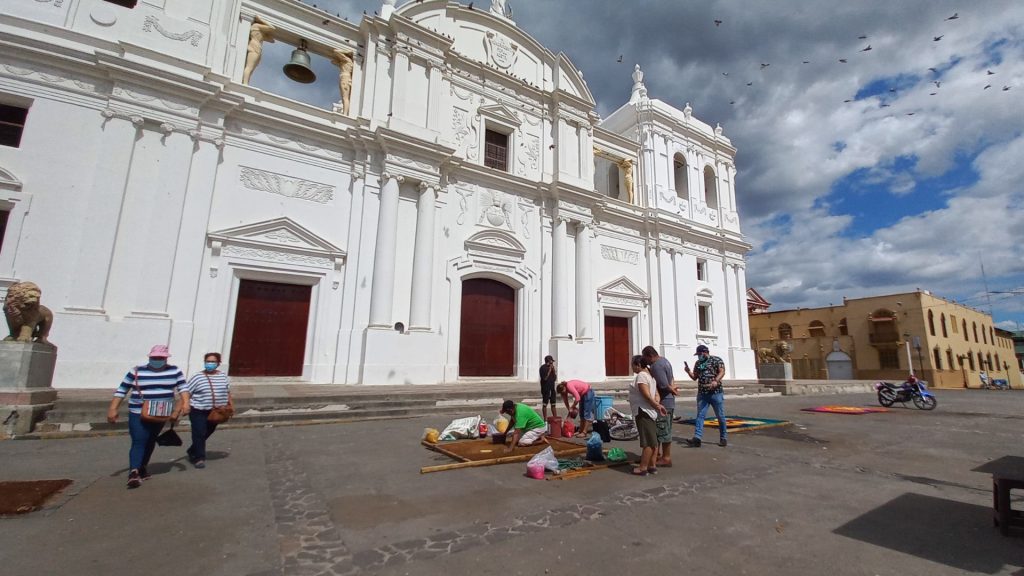
He relates that the first rugs of the Sutiabas natives were made before the arrival of the Spaniards. At that time, they were made of flowers, when the natives (indigenous) threw the flowers to the ground in the path of the idols that were mounted on platforms of branches, headed by the priests and the main lords.
“With the conquest, another way of making carpets appeared in the Creole period, before independence. So when the city grew from the Chichunte area towards the round that was the empty space where Banpro is today, in that period they entered into an alliance with Los Sutiabas, and the criollos who were the ones who dominated political power, being León still the capital. they began to make sawdust carpets with the material they accumulated on their land when they built all those colonial houses,” the historian described.
Repressors look for “appearances”
Faced with the refusal to participate by the artisans of Sutiaba, the Sandinista government seeks support from the Intur, the Sandinista Youth, and workers from other state institutions to make their own passion carpets. A source said for this report, that the mayor’s office and the Intur, are offering the amount of 600 córdobas for the elaboration of the passion carpets in the Juan José Quezada square and the street of the road to the mayor’s office.
“Artisans work in these months. The materials are collected and we mix the colors ourselves to give tone to the themes, by the way, everything is expensive. Just an ounce of color costs 80 córdobas, 140 for a bag of white sawdust, and other materials that are used,” explained Anielka Hernández, who supported the artisans in making the rugs.








